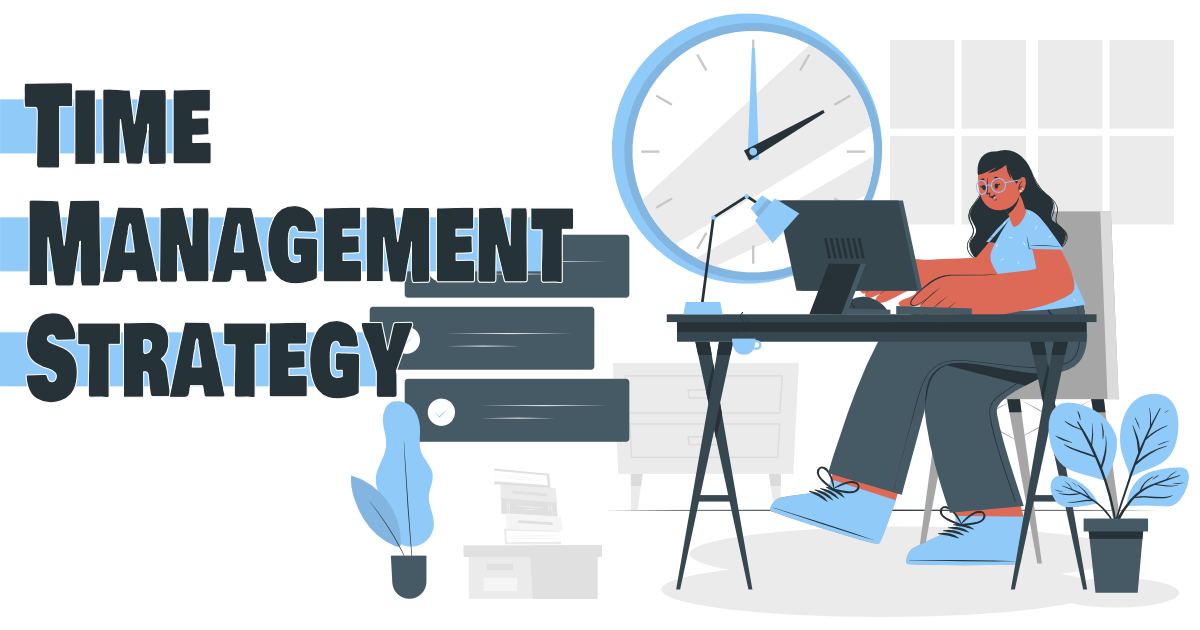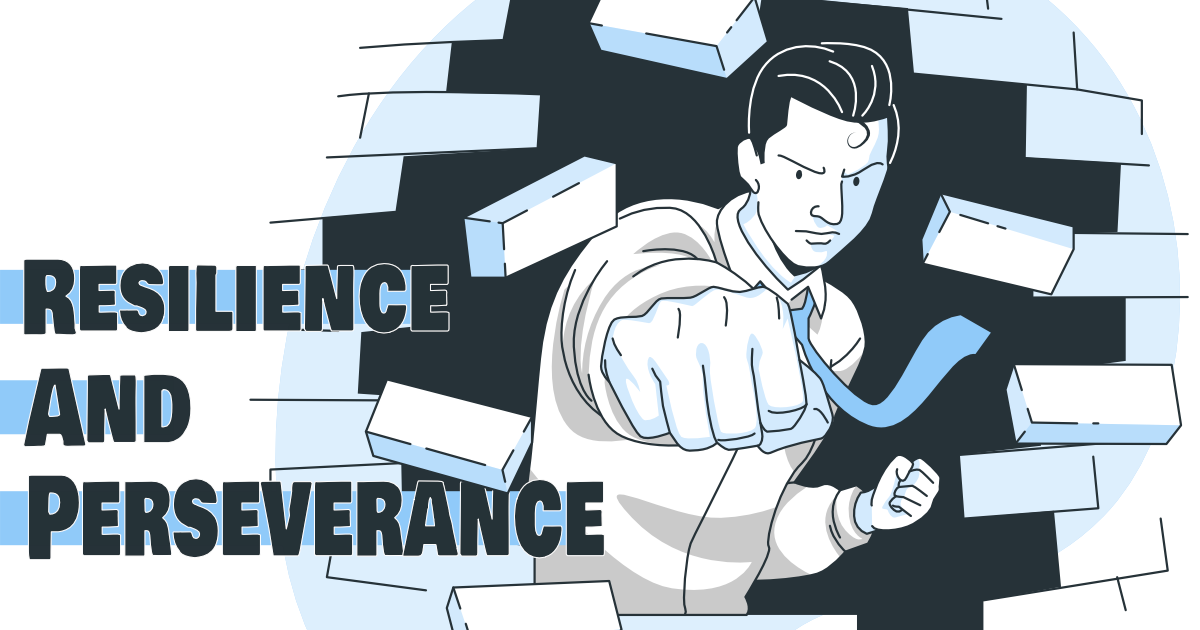Continuously evaluating and adjusting time management strategies is a crucial aspect of achieving a healthy work-life balance. It is essential to regularly reassess and fine-tune the methods we use to manage our time in order to ensure they are effective and sustainable over time. By regularly reflecting on our habits and routines, we can identify areas for improvement and make necessary changes to improve our overall productivity and well-being. This sub-topic explores the importance of continuous evaluation and adjustment of time management strategies and provides actionable tips for doing so effectively.
Measuring the effectiveness of current strategies
Continuously evaluating and adjusting time management strategies is an important aspect of maintaining balance and effectiveness in one’s personal and professional life. The process involves measuring the effectiveness of current strategies, identifying areas for improvement, and making necessary changes to optimize time management. In this article, we’ll explore the step-by-step process of measuring the effectiveness of current strategies, why it’s important, and best practices to get the most out of it.
Measuring the Effectiveness of Current Strategies
Step 1: Keep a Time Log
To measure the effectiveness of current strategies, it’s crucial to first understand how time is being spent. Keeping a time log is a great way to get a detailed breakdown of how time is being spent throughout the day. This can be done using a simple notebook or using a time tracking app.
Step 2: Analyze the Time Log
Once a time log has been kept for a few days or a week, it’s time to analyze it. Look for patterns and trends in how time is being spent and determine if current strategies are effectively allocating time towards the most important tasks and activities.
Step 3: Identify Areas for Improvement
After analyzing the time log, identify areas where time could be better managed. This could involve reallocating time from less important tasks to more important ones, reducing the time spent on distractions or non-essential activities, or finding ways to optimize current strategies.
Step 4: Make Necessary Changes
Once areas for improvement have been identified, it’s time to make necessary changes. This could involve adjusting schedules, prioritizing tasks differently, using different tools or techniques to manage time, or seeking support from others to help manage time more effectively.
Best Practices
- Regularly evaluate and adjust strategies: Continuously evaluating and adjusting time management strategies should be a regular and ongoing process. This can be done monthly, bi-monthly, or even weekly depending on personal preferences and the complexity of the individual’s schedule.
- Be honest with yourself: When evaluating current strategies, it’s important to be honest about what is and isn’t working. Don’t be afraid to make changes or try new approaches if something isn’t working.
- Focus on areas that have the biggest impact: When making changes, focus on the areas that have the biggest impact on time management. This could involve reducing distractions, streamlining processes, or finding ways to delegate tasks to others.
- Be open to trying new approaches: The world of time management is constantly evolving, and new tools and techniques are being developed all the time. Be open to trying new approaches and don’t be afraid to experiment to see what works best for you.
Conclusion
Measuring the effectiveness of current time management strategies is an important aspect of maintaining balance and effectiveness in one’s personal and professional life. By regularly evaluating and adjusting strategies, individuals can ensure that they are effectively allocating time towards the most important tasks and activities. Whether it’s reducing distractions, streamlining processes, or seeking support from others, there are many ways to optimize time management and get the most out of each day.
Identifying areas for improvement
Identifying areas for improvement is an important step in continuously evaluating and adjusting your time management strategies. This helps to ensure that you are using your time effectively and efficiently and helps you to avoid overloading yourself with tasks or activities that do not contribute to your long-term goals.
Step-by-Step Guide
- Reflect on your daily habits and routines: Take some time to reflect on your daily habits and routines. What activities or tasks do you spend the most time on? What activities or tasks do you find yourself procrastinating on?
- Evaluate the outcomes of your current strategies: Consider the outcomes of your current time management strategies. Are you meeting your goals? Are you satisfied with the results? What changes could you make to improve your outcomes?
- Identify areas of inefficiency: Look for areas in your daily routine where you could be more efficient. This could include tasks that take longer than they should, activities that are not contributing to your goals, or time-wasting habits like checking your phone frequently.
- Prioritize your goals and tasks: Make sure that you are prioritizing your goals and tasks in a way that aligns with your values and objectives. Consider what is most important to you and what you need to focus on in order to achieve your goals.
- Seek feedback from others: Ask friends, family members, or coworkers for their perspective on your time management habits. They may be able to identify areas for improvement that you have missed.
Best Practices
- Keep a time log: Keeping a time log can help you to track how you are spending your time and identify areas for improvement.
- Set realistic goals: Setting realistic goals for your time management strategies is key to success. Make sure that you have a clear understanding of what you want to achieve and how much time you need to allocate towards each task.
- Be open to change: Be open to making changes to your time management strategies if they are not working for you. Experiment with new approaches and be willing to adjust your strategies as needed.
- Make use of technology: There are many tools and technologies available that can help you to improve your time management. From calendars and task lists to time-tracking apps and productivity software, there is a wide range of options to choose from.
Actionable Tips
- Cut back on unnecessary activities: Consider cutting back on activities that are not contributing to your goals. This could include social media browsing, watching TV, or other time-wasting habits.
- Set boundaries: Set boundaries for yourself in terms of when and how you will be available to others. This can help you to avoid overcommitting and ensure that you have enough time to focus on your goals and tasks.
- Plan your day the night before: Take a few minutes each night to plan out your next day. This can help you to stay organized and avoid feeling overwhelmed.
- Seek support from others: Seek support from family and friends when you need it. They can help you to stay motivated and on track with your goals.
Conclusion
Identifying areas for improvement in your time management strategies is an important step in ensuring that you are using your time effectively and efficiently. By reflecting on your daily habits and routines, evaluating the outcomes of your current strategies, and seeking feedback from others, you can identify areas for improvement and make the necessary changes to achieve your goals.
Staying open to new approaches and tools
Time management is a dynamic process that requires constant evaluation and improvement. Staying open to new approaches and tools can help individuals find more effective ways to manage their time and achieve their goals. This article will explore the benefits of keeping an open mind and the steps individuals can take to continuously improve their time management strategies.
In the fast-paced world, there is always something new and innovative that can make our lives easier. The same holds true for time management. There are always new tools, approaches, and strategies being developed that can help individuals better manage their time and get more done in less time. Staying open to these new developments can help individuals find ways to optimize their time and achieve their goals more efficiently.
How to stay open?
- Research: Researching new time management tools and approaches is a great way to stay informed and open-minded. This can involve reading articles, attending seminars, and talking to colleagues who have adopted new methods.
- Try new tools: Trying out new time management tools can help individuals determine if they are a good fit for their specific needs. There are many tools available, including apps, software, and other technological solutions.
- Be open-minded: When trying new tools, it’s important to approach them with an open mind. This means not being too quick to dismiss a new tool just because it’s different from what you’re used to. Instead, give the tool a chance and see how it can help improve your time management.
- Seek advice: Asking others for advice on time management can help individuals learn about new approaches and tools. This can be especially helpful when seeking advice from individuals who have been using new tools or strategies for a while.
Examples
- A business professional who is used to using a paper-based planner decides to try a digital planner app. They are able to manage their schedule and tasks more efficiently and effectively, saving them time and increasing their productivity.
- An individual who is having trouble staying focused during the day tries a new tool called “freedom” which blocks distracting websites and apps. They find that they are able to focus better and get more done in less time.
Best Practices
- Stay informed: Keep up with industry trends and new developments in time management to stay open to new approaches and tools.
- Be willing to experiment: Don’t be afraid to try new tools and approaches to see if they work for you.
- Keep an open mind: Approach new tools and approaches with an open mind, and be willing to consider them as potential solutions to your time management challenges.
- Get feedback: Seek feedback from others who have tried new tools and approaches, and use their insights to guide your decision-making.
Actionable Tips
- Make a list of your current time management challenges.
- Research new tools and approaches that may help address those challenges.
- Try out a few new tools and approaches, and track your progress to see what works best.
- Ask others for advice, and seek feedback from those who have tried new tools and approaches.
Conclusion
Staying open to new approaches and tools can help individuals continuously improve their time management strategies. By being willing to experiment and seek advice, individuals can find ways to optimize their time and achieve their goals more efficiently. By following best practices and actionable tips, individuals can stay informed and open-minded, continuously finding new and innovative ways to manage their time.
Incorporating feedback from colleagues and team members
The impact of time management can extend beyond an individual’s personal life and impact the overall productivity of a team or an organization. It’s important to not only evaluate one’s own time management strategies but to also gather feedback from colleagues and team members to ensure that everyone is working together efficiently. Incorporating feedback from others can help identify any potential roadblocks and help find solutions to overcome them.
Step 1: Ask for Feedback
The first step in incorporating feedback from colleagues and team members is to simply ask for it. This can be done through formal or informal channels, such as through regular check-ins, surveys, or during team meetings. Be clear about the specific areas you’d like feedback on, such as time management and productivity, and ask open-ended questions to allow for more in-depth responses.
Step 2: Listen and Evaluate
Once feedback has been gathered, the next step is to listen and evaluate the information received. This may include considering suggestions, identifying patterns in feedback, and reflecting on any areas of common concern. It’s important to keep an open mind and not dismiss feedback just because it may be different from what you’re used to.
Step 3: Implement Changes
Based on the feedback received, the next step is to implement changes. This may include adjusting existing time management strategies, incorporating new tools or approaches, or making changes to team processes to better support everyone’s productivity. When making changes, be sure to clearly communicate the rationale behind the changes and how they will benefit the team.
Step 4: Continuously Monitor and Evaluate
Finally, it’s important to continuously monitor and evaluate the effectiveness of the changes made. This can be done through regular check-ins, surveys, or other means of gathering feedback. It’s important to stay open to making further changes as needed and to be proactive in seeking out feedback from others to ensure that everyone is working together efficiently.
Examples and Real-Life Scenarios
- A team leader in a marketing department may conduct regular check-ins with team members to gather feedback on the current process for managing projects. Based on the feedback received, the leader may adjust the project management process to better support the team’s productivity.
- A startup company may conduct regular surveys to gather feedback from employees on various aspects of their work, including time management and productivity. Based on the feedback received, the company may adjust its policies and procedures to better support the employees and improve overall productivity.
Best Practices
- Be clear and specific about the areas you’d like feedback on
- Ask open-ended questions to encourage more in-depth responses
- Keep an open mind and be willing to consider feedback, even if it’s different from what you’re used to
- Clearly communicate the rationale behind any changes made and how they will benefit the team
- Continuously monitor and evaluate the effectiveness of changes made
Tools and Actionable Tips
- Conduct regular check-ins, surveys, or team meetings to gather feedback
- Use project management software to help track progress and identify areas for improvement
- Utilize time tracking software to better understand how time is being spent and identify areas for improvement
- Consider scheduling regular feedback sessions with team members to keep communication open and proactive
Conclusion
Incorporating feedback from colleagues and team members is an important aspect of effective time management. It helps identify areas for improvement and ensure that everyone is working together efficiently. By asking for feedback, listening and evaluating, implementing changes, and continuously monitoring and evaluating, you can ensure that your time management strategies are effective and continuously improving.
Continuously refining and adjusting routines
One of the key aspects of effective time management is the ability to continuously refine and adjust routines to maximize productivity and efficiency. It is essential to regularly assess and make changes to existing routines to ensure they are aligned with current goals and priorities, and to address any new challenges that may arise.
Step-by-Step Guide
- Regularly assess current routines: Make it a habit to regularly reflect on current routines and identify areas for improvement. This can be done through self-reflection, seeking feedback from colleagues and family members, or using time tracking tools.
- Identify areas for improvement: Identify the areas in which your current routines are not working effectively or efficiently, and determine what changes need to be made.
- Evaluate and implement new approaches: Research new approaches, tools, or strategies that can help improve the identified areas for improvement. Experiment with different approaches and select the best option for your specific situation.
- Adjust routines as necessary: Based on the results of your experimentation, make changes to your routines as necessary. This may involve making small tweaks or implementing major changes to the way you approach tasks and manage your time.
- Monitor progress: Regularly monitor your progress and evaluate the effectiveness of the changes you have made to your routines. Make additional adjustments as necessary to ensure your routines are constantly aligned with your goals and priorities.
Examples
- A salesperson may realize that they are spending too much time on administrative tasks such as data entry and scheduling, and decide to outsource these tasks to a virtual assistant to free up more time for selling and prospecting.
- A project manager may identify that they are having trouble keeping track of deadlines and may implement a project management tool to help them better manage their time and keep their team on track.
Best Practices
- Regularly reflect on current routines and identify areas for improvement.
- Research and experiment with new approaches and tools.
- Regularly monitor progress and make adjustments as necessary.
- Seek feedback from colleagues, team members, and family members.
- Be flexible and open to new ideas and approaches.
Actionable Tips
- Schedule regular check-ins with yourself to reflect on your routines and identify areas for improvement.
- Make a list of tools and approaches that can help you better manage your time, and experiment with a new tool or approach each month.
- Seek feedback from coworkers and family members on your routines and ask for suggestions on ways to improve.
- Be open to making changes, even if they involve significant shifts in your approach.
Conclusion
Continuously refining and adjusting routines is a critical component of effective time management. Regular self-reflection, seeking feedback from others, and experimenting with new approaches and tools can help ensure that routines are constantly aligned with goals and priorities, and help to maximize productivity and efficiency. By being flexible and open to change, individuals can stay ahead of the curve and remain competitive in an ever-changing world.
Staying up-to-date with industry developments and trends
Maintaining a constant pulse on industry trends and developments is a critical component of effective time management. Keeping up-to-date with the latest advancements, technologies, and best practices in your field can help you stay ahead of the competition, improve your skills, and stay motivated.
Step-by-Step Guide
- Identify the Key Trends: The first step in staying up-to-date with industry trends is to identify the key areas that are relevant to your job or field. Keep a lookout for any new advancements, technologies, or best practices that are emerging in your industry.
- Follow Relevant Resources: Once you have identified the key trends, it’s essential to follow relevant resources such as industry publications, websites, blogs, and social media accounts that keep you updated on the latest developments in your field. You can also sign up for email newsletters or subscribe to relevant podcasts or webinars.
- Attend Conferences and Workshops: Attending conferences and workshops is an excellent way to stay up-to-date with industry trends. These events bring together experts in your field, and you can learn about the latest advancements and technologies, as well as network with other professionals.
- Join Professional Organizations: Joining professional organizations in your field can also help you stay up-to-date with industry trends. These organizations typically offer educational resources, events, and opportunities to network with other professionals.
- Collaborate with Colleagues: Collaborating with colleagues and exchanging information with others in your field can also help you stay up-to-date with industry trends. This could involve participating in discussions, sharing articles and resources, and attending professional events together.
Examples and Best Practices
- An HR professional can stay up-to-date with the latest employment laws and regulations by subscribing to relevant websites and attending conferences and workshops.
- A marketing professional can stay up-to-date with the latest digital marketing trends by following industry publications and attending conferences and workshops.
- A software developer can stay up-to-date with the latest technologies and best practices in their field by following relevant blogs and social media accounts, attending conferences and workshops, and joining professional organizations.
Tools
- Industry publications and websites
- Social media accounts and blogs
- Email newsletters and podcasts
- Conferences and workshops
- Professional organizations
Actionable Tips
- Make a list of the key trends and developments in your field and keep it updated regularly.
- Set aside dedicated time each week to read industry publications, follow relevant social media accounts, and attend events.
- Network with others in your field, attend conferences and workshops, and join professional organizations to stay connected with the latest industry trends.
- Stay up-to-date with the latest technologies and advancements in your field to improve your skills and stay ahead of the competition.
Conclusion
Staying up-to-date with industry trends and developments is an essential component of effective time management. By following relevant resources, attending conferences and workshops, and collaborating with colleagues, you can stay informed and ahead of the curve in your field. This, in turn, can help you improve your skills, stay motivated, and remain competitive in today’s fast-paced business environment.
Regularly reassessing priorities and goals
Effective time management requires a continuous evaluation of one’s strategies and routines, as well as a regular reassessment of priorities and goals. This article will provide a step-by-step guide to help you evaluate your current time management approach, identify areas for improvement, and adjust your priorities and goals to meet your changing needs.
Step 1: Evaluate your current approach
The first step in reassessing your priorities and goals is to evaluate your current time management approach. Take a look at how you spend your time and identify areas where you can be more productive or efficient. This can be done using a time tracking tool or simply by writing down how you spend your time each day.
Step 2: Identify areas for improvement
Once you have evaluated your current approach, the next step is to identify areas for improvement. This could be anything from procrastination to spending too much time on low-priority tasks. By identifying areas for improvement, you can focus your efforts on making changes that will have the biggest impact on your productivity.
Step 3: Adjust your priorities and goals
The next step is to adjust your priorities and goals based on your evaluation and the areas you identified for improvement. This might mean prioritizing tasks that you have been putting off or setting more achievable goals for the day or week. It is important to be flexible and adaptable in your approach, as your priorities and goals may change over time.
Step 4: Continuously refine and adjust routines
Finally, it is important to continuously refine and adjust your routines to ensure that they are effective and efficient. This could mean incorporating new tools or techniques, or simply tweaking your existing approach. Regularly reassessing your priorities and goals will help you stay on track and make the most of your time.
Best Practices and Tools
- Set clear and achievable goals for each day or week
- Prioritize tasks based on importance and urgency
- Use time tracking tools to monitor your productivity and efficiency
- Incorporate feedback from colleagues and team members
- Stay up-to-date with industry developments and trends
- Use productivity apps and tools to help manage your time
- Regularly reassess your priorities and goals to ensure that they are aligned with your changing needs
Real-Life Scenarios
- A project manager who regularly reassesses their priorities and goals to ensure that they are staying on track and making the most of their time.
- A business owner who adjusts their priorities and goals based on feedback from their team and market trends to stay ahead of the competition.
- A student who regularly reassesses their study schedule to ensure that they are making the most of their time and meeting their goals.
Actionable Tips
- Start each day with a clear understanding of your priorities and goals
- Make a schedule and stick to it as much as possible
- Focus on the most important tasks first
- Take breaks when you need them
- Delegate tasks where possible
- Say no to low-priority tasks
- Regularly review your progress and make adjustments as needed
Conclusion
Reassessing your priorities and goals is an essential part of effective time management. By continuously evaluating your strategies and routines, you can identify areas for improvement, adjust your approach, and ensure that you are making the most of your time. Whether you are a project manager, business owner, student, or anyone else, regular reassessment will help you stay on track and achieve your goals.
Avoiding complacency and remaining adaptable
Time management strategies that work for an individual or an organization at one time may become ineffective in the face of new challenges, changes, or emerging opportunities. Therefore, it’s essential to continuously evaluate and adjust these strategies to maintain their balance and effectiveness. This article focuses on how to avoid complacency and remain adaptable in time management practices.
Step-by-Step Guide
Be Proactive in Seeking New Information and Ideas
It’s crucial to continuously seek new information and ideas to keep up with the changes and advancements in the industry. Attend conferences, workshops, and seminars, read relevant books, and subscribe to industry publications. This exposure can help identify new trends and approaches that can improve current time management strategies.
Regularly Reassess Priorities and Goals
It’s essential to regularly reassess priorities and goals to ensure that the time management strategies align with them. This reassessment helps to adjust strategies to ensure they remain effective in meeting the set goals.
Stay Up-to-Date with Industry Developments and Trends
To remain effective in time management, it’s important to stay up-to-date with the latest developments and trends in the industry. This information helps to identify new opportunities and challenges, and to adjust time management strategies accordingly.
Embrace Change and Be Willing to Try New Things
Change is a constant in the business world, and it’s essential to embrace it and be willing to try new things. This mindset allows individuals and organizations to continuously adapt and refine time management strategies to remain effective.
Continuously Refine and Adjust Routines
It’s crucial to continuously refine and adjust routines to keep time management strategies current and effective. This continuous refinement helps to ensure that the strategies remain relevant and aligned with changing needs and priorities.
Incorporate Feedback from Colleagues and Team Members
Feedback from colleagues and team members can provide valuable insights into the effectiveness of time management strategies. Incorporating this feedback helps to continuously improve and adjust strategies for better results.
Stay Open to New Approaches and Tools
The business world is constantly evolving, and it’s essential to stay open to new approaches and tools that can improve time management. Staying open-minded and willing to try new things can help individuals and organizations stay ahead of the curve and continuously improve time management strategies.
Examples and Real-Life Scenarios
- A software development company realizes that their current project management processes are no longer effective in meeting their goals. They attend a conference and learn about Agile methodologies, which they then implement to improve their time management and project outcomes.
- A marketing manager regularly attends industry conferences and reads relevant publications to stay up-to-date with the latest trends and advancements in the field. This exposure helps them identify new tools and approaches to improve their time management and marketing strategies.
- An entrepreneur regularly reassesses their priorities and goals, adjusting their time management strategies to ensure they are aligned with their aspirations.
Best Practices
- Continuously evaluate and assess your current strategies and routines to identify areas for improvement.
- Stay informed about industry developments and trends, and be open to new approaches and tools that can help improve your productivity and effectiveness.
- Incorporate feedback from colleagues and team members, and regularly reassess your priorities and goals.
- Stay flexible and open-minded, and be willing to make changes as needed to stay ahead of the curve.
- Continuously refine and adjust your routines to optimize your work processes and ensure that they align with your goals and priorities.
- Keep learning and growing by setting aside time each day or week to read, learn, and engage in new experiences that challenge your thinking and help you stay adaptable.
- Finally, embrace change and be proactive in seeking out new opportunities that can help you grow and evolve professionally.
Conclusion
In conclusion, effective time management is not just about staying organized and avoiding distractions, but also about continuously refining and adjusting your strategies to achieve balance and effectiveness in your work. By staying informed about industry developments, incorporating feedback, and regularly reassessing your priorities, you can stay ahead of the curve and avoid complacency in your professional life. With persistence, discipline, and the right tools and resources, you can achieve your goals and remain adaptable in an ever-changing work environment.
Seeking advice and professional development opportunities
Continuous improvement is essential for success in personal and professional life. One way to stay on top of time management and efficiency is to seek advice and engage in professional development opportunities. This article will provide a step-by-step guide on how to effectively seek advice and engage in professional development opportunities to enhance time management and efficiency skills.
Step 1: Identifying Areas for Improvement
The first step in seeking advice and professional development opportunities is to identify areas for improvement. Take a moment to assess your current time management strategies and processes and identify areas where you could use some help. This could be anything from prioritizing tasks to delegating responsibilities, or using technology to streamline processes.
Step 2: Research and Networking
Once you have identified areas for improvement, the next step is to research and network with experts in your field. This can be done through online searches, attending industry conferences, or joining professional organizations. Look for individuals or organizations that specialize in time management and efficiency and make connections with them.
Step 3: Ask for Advice
After identifying experts and making connections, reach out and ask for advice. This could be through online forums, in-person meetings, or by reaching out directly to individuals in your network. Be specific about the areas where you need help and ask for guidance on how to improve your time management skills.
Step 4: Engage in Professional Development Opportunities
In addition to seeking advice, engage in professional development opportunities such as workshops, webinars, and training programs. These opportunities provide hands-on experience and practical skills that can be applied to improve your time management and efficiency.
Best Practices
- Take advantage of online resources, such as blogs, forums, and social media groups, to network with experts and learn from others in your field.
- Consider seeking mentorship from someone who has successfully navigated similar challenges in time management and efficiency.
- Keep an open mind and be willing to try new approaches and tools, even if they are outside of your comfort zone.
Tools and Actionable Tips
- Attend industry conferences and events to network with experts and attend presentations and workshops on time management and efficiency.
- Join professional organizations that focus on time management and efficiency, such as the National Association of Productivity and Organizing Professionals.
- Consider investing in time management and productivity courses or certifications to enhance your skills.
Real-Life Scenarios
- A small business owner struggling with prioritizing tasks and managing their time effectively could reach out to a business coach for advice and enroll in a time management workshop to improve their skills.
- A project manager looking to improve their delegation skills could attend a workshop on delegation strategies and seek advice from a mentor in their field.
Conclusion
Continuous improvement and growth are essential for success in personal and professional life. Seeking advice and engaging in professional development opportunities is a valuable way to enhance time management and efficiency skills. By following the steps outlined in this article and using the best practices, tools, and actionable tips, you can take your time management skills to the next level and achieve greater success in your personal and professional life.
Encouraging a growth mindset and continuous improvement
Continuous improvement and the development of a growth mindset are essential elements of successful time management. A growth mindset is the belief that abilities and intelligence can be developed through effort and learning. Encouraging this type of thinking can lead to a more positive and proactive approach to time management, leading to better results and higher productivity.
Step-by-Step Guide
- Recognize the Importance of a Growth Mindset: The first step is to recognize the importance of having a growth mindset and how it can positively impact your time management skills.
- Embrace Challenges: Embracing challenges and viewing them as opportunities to grow and improve can help to develop a growth mindset.
- Focus on Process, not Outcome: Focus on the process of managing your time and not just the end result. This means being open to new approaches and tools, seeking feedback and advice, and regularly reassessing and refining your routines.
- Encourage Learning: Encourage yourself and others to continuously learn and improve. This could involve attending workshops or conferences, reading books and articles on time management, or seeking advice from colleagues or experts.
- Foster a Positive Attitude: Foster a positive attitude towards change and continuous improvement. This means being open to trying new approaches, embracing failures as opportunities for learning, and being willing to make adjustments as needed.
- Celebrate Successes: Celebrate successes, no matter how small, as a way to reinforce a growth mindset and the continuous improvement process.
Best Practices
- Set Specific and Measurable Goals: Setting specific and measurable goals for time management can help to keep you focused and motivated.
- Use Tools and Technology: There are many tools and technologies available that can help with time management. Some popular tools include calendars, to-do lists, and productivity apps.
- Create a Support System: Creating a support system of colleagues, friends, or family members who can offer encouragement and feedback can be invaluable in maintaining a growth mindset and continuous improvement.
- Practice Self-Reflection: Regularly reflect on your time management practices and make adjustments as needed. This can help to identify areas for improvement and to stay on track with your goals.
Actionable Tips
- Start Small: Start with small changes to your time management habits and gradually build from there.
- Focus on What Matters: Prioritize tasks and activities that are most important to you and your goals.
- Take Breaks: Regularly taking breaks can help to maintain focus, reduce stress, and improve overall productivity.
- Learn from Mistakes: Embrace failures as opportunities for learning and growth. Use mistakes as a way to identify areas for improvement and make adjustments.
Conclusion
Developing a growth mindset and embracing continuous improvement are key elements of successful time management. By recognizing the importance of these concepts, embracing challenges, focusing on process, encouraging learning, fostering a positive attitude, and celebrating successes, individuals can develop and maintain positive time management habits and achieve their goals.
Resources and References
- “The 7 Habits of Highly Effective People” by Stephen Covey
- “Getting Things Done: The Art of Stress-Free Productivity” by David Allen
- “The Time Management Matrix: Essential Priorities” by Brian Tracy
- “18 Minutes: Find Your Focus, Master Distraction, and Get the Right Things Done” by Peter Bregman
- “The Power of Habit: Why We Do What We Do in Life and Business” by Charles Duhigg
- “Crushing It!: How Great Entrepreneurs Build Their Business and Influence—and How You Can, Too” by Gary Vaynerchuk
- “Drive: The Surprising Truth About What Motivates Us” by Daniel H. Pink
- “Mindset: The New Psychology of Success” by Carol S. Dweck
- “Time Management from the Inside Out” by Julie Morgenstern
- “Atomic Habits: An Easy & Proven Way to Build Good Habits & Break Bad Ones” by James Clear











